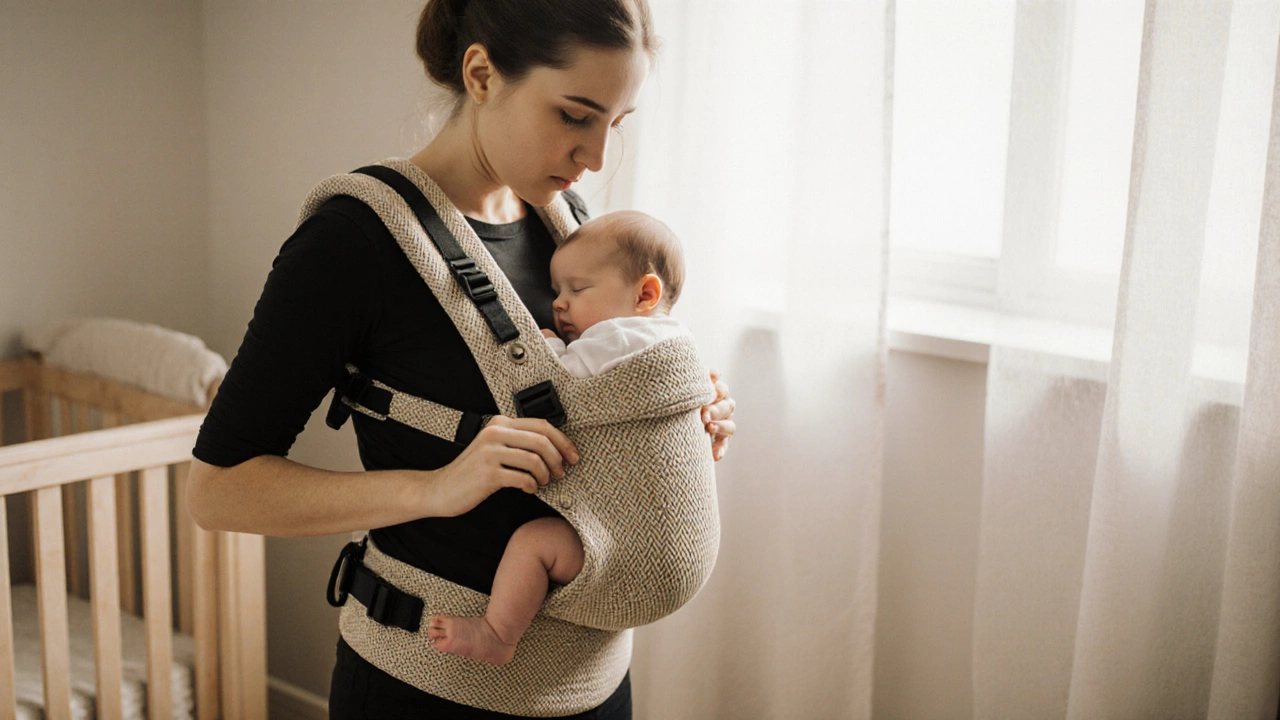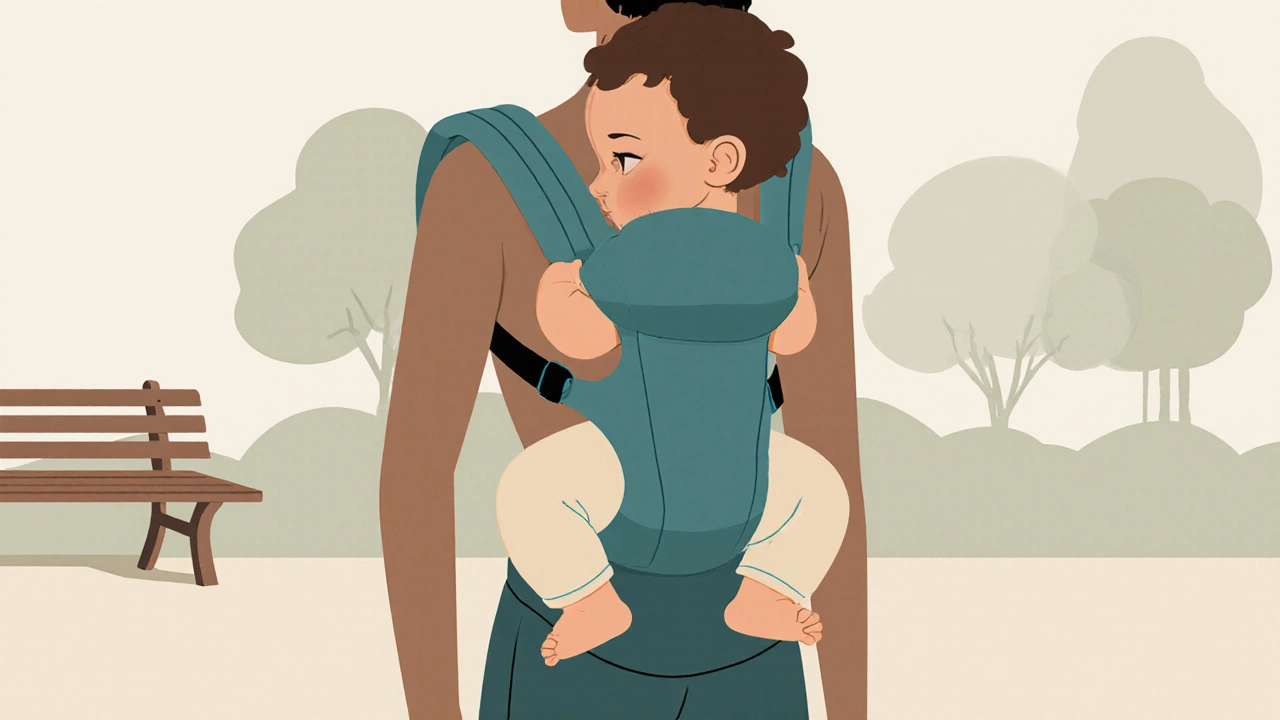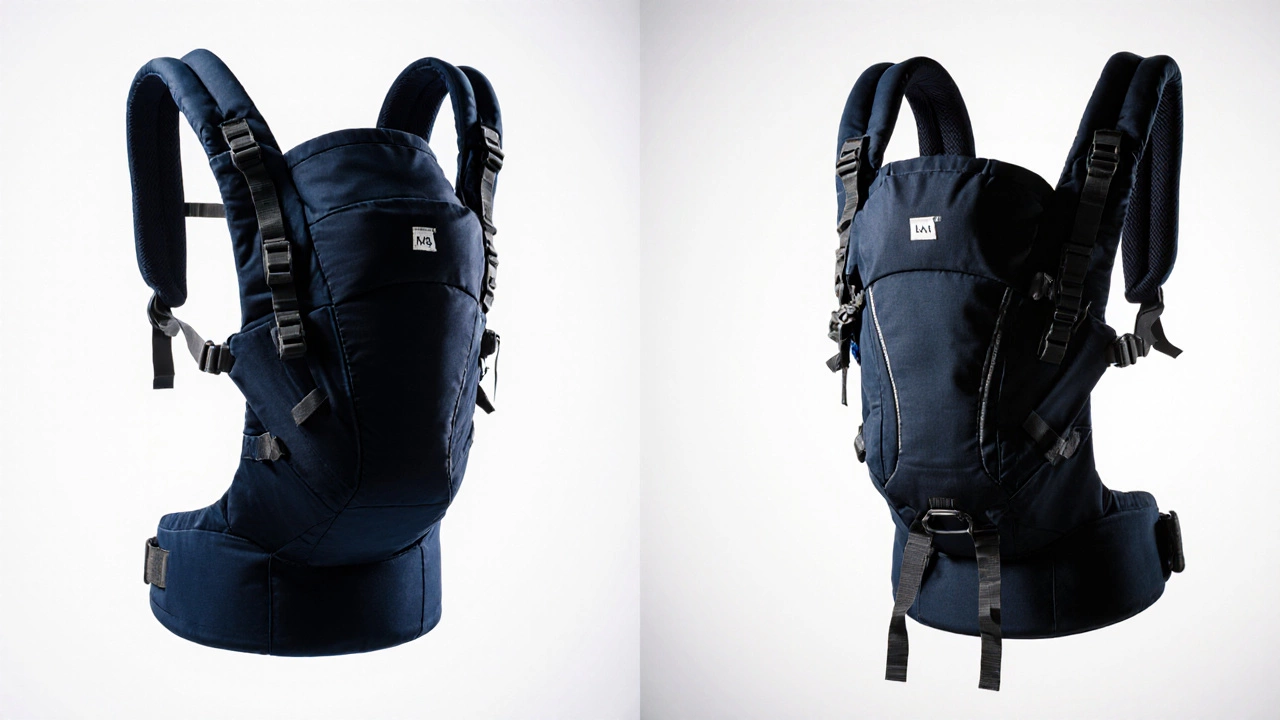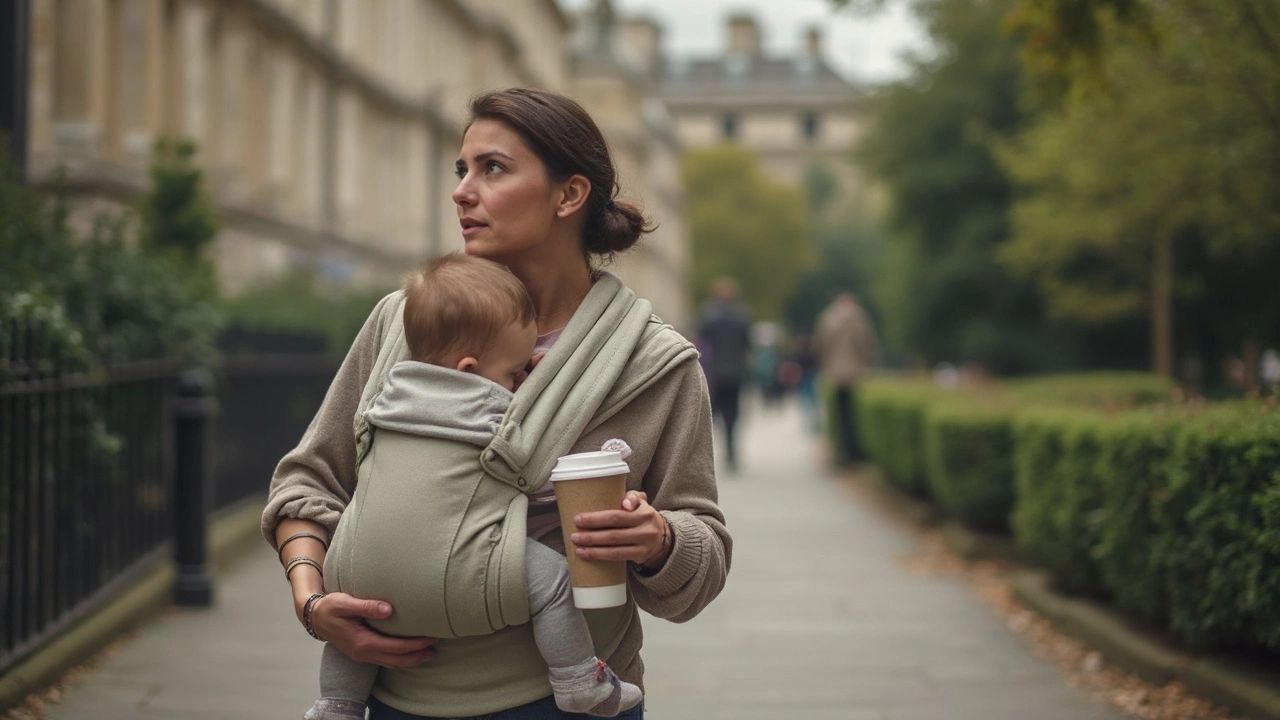Are Baby Carriers Bad for Baby Spine? What Pediatricians Really Say

Every new parent wants to keep their baby close-comforted, secure, and easy to carry through errands, walks, or just quiet moments at home. Baby carriers have become a go-to tool for millions of families. But with so many options on the market, a common worry keeps popping up: are baby carriers bad for baby spine? The answer isn’t simple, and it’s not as scary as some online forums suggest. What matters most is how you use it, when you start, and what kind of carrier you choose.
How a Baby’s Spine Develops
Babies aren’t born with an S-shaped spine like adults. At birth, their spine is naturally curved into a C-shape, which is perfect for being curled up in the womb. Over the first year, their spine slowly straightens and forms the two natural curves-the neck (cervical) and lower back (lumbar)-as they gain strength and start lifting their head, rolling over, sitting up, and eventually standing.
That’s why experts say you shouldn’t expect a newborn to sit upright on their own until around 6 months. Before that, their spine and muscles aren’t ready to support weight in a straight, upright position. This is critical when choosing a carrier. If a carrier forces a baby’s spine into a straight line or lets their legs dangle, it can put unnatural pressure on developing vertebrae and hip joints.
What Makes a Carrier Safe for the Spine
Not all baby carriers are created equal. The ones that are safest for your baby’s spine follow what pediatric orthopedists call the M-position or frog-leg position. This means the baby’s knees are higher than their bottom, their thighs are supported, and their spine stays in a gentle C-curve.
Look for carriers that:
- Support the baby from knee to knee (no dangling legs)
- Keep the baby’s bottom lower than their knees
- Allow the baby’s back to remain rounded, not flattened
- Position the baby facing inward (toward you) until they’re at least 5-6 months old
Carriers that mimic the way you’d hold a baby in your arms are usually the best. Think of it like this: if you were holding your baby upright on your hip, you’d naturally cup their bottom and support their legs. A good carrier does the same thing.
Why Some Carriers Can Cause Problems
Not every carrier on the shelf is designed with spine health in mind. Some budget-friendly or trendy models-especially those marketed as “universal” or “one-size-fits-all”-have narrow seats and no leg support. These can cause what’s called hip dysplasia risk or spinal flattening.
A 2022 study by the International Hip Dysplasia Institute reviewed over 1,200 baby carrier designs and found that carriers with a wide, supportive seat reduced hip stress by 68% compared to narrow-slung models. The study also noted that babies in carriers with poor back support showed signs of increased spinal curvature strain during extended use.
Here’s what to avoid:
- Carriers where the baby’s legs hang straight down
- Front-facing carriers before 6 months
- Soft-structured carriers without lumbar support for newborns
- Wrap carriers tied too tightly around the baby’s torso, squeezing the spine
Front-facing carriers might look cute-baby grinning at the world-but they’re not ideal before 6 months. When a baby faces outward, their spine has to arch backward to stay upright, and their neck muscles have to work harder to hold their head steady. That’s not just uncomfortable-it’s biomechanically stressful.

Age Matters: When Can You Start Using a Carrier?
Many parents start using carriers right after coming home from the hospital. That’s fine-but only if the carrier is designed for newborns. Look for models with a newborn insert or adjustable support that cradles the baby’s head, neck, and spine properly.
Here’s a simple age-based guide:
- 0-3 months: Use only carriers with full head and neck support. Baby should be in a curled, fetal-like position. No forward-facing.
- 3-6 months: Baby can hold head up better. Still need full leg support and inward-facing position.
- 6+ months: Baby can sit with support. Can start using carriers with more upright positioning. Forward-facing is okay now, but limit time to 20-30 minutes at a time.
Always check your carrier’s weight and height limits. Most carriers say they’re safe from 7 pounds up-but that doesn’t mean they’re safe for a newborn’s spine. A 7-pound baby still needs proper spinal alignment, not just a strap around their body.
Signs Your Carrier Might Be Hurting Your Baby’s Spine
It’s easy to miss early signs. Babies can’t tell you their back hurts. But they’ll show you.
- Your baby arches their back or stiffens up when in the carrier
- They cry more during or after being carried
- You notice their head lolling backward even when you think they’re supported
- They seem to have trouble moving their legs or hips after being in the carrier
- They develop a flat spot on the back of their head (plagiocephaly) from being held in one position too long
If you see any of these, stop using the carrier immediately. Try a different model or adjust the straps. If symptoms continue, talk to your pediatrician or a pediatric physical therapist. Early intervention can prevent long-term issues.
Top 3 Carrier Types That Support Healthy Spine Development
Not all carriers are risky. Many are designed by pediatric physical therapists and orthopedists specifically to protect developing spines. Here are the three most recommended types:
- Soft-structured carriers with infant inserts (e.g., Ergobaby Omni 360, BabyBjörn One): These offer adjustable panels that cradle the baby’s spine and legs properly. They’re easy to use and have been tested in clinical settings.
- Woven wraps (e.g., Didymos, Stokke): When tied correctly, wraps mold perfectly to the baby’s body, supporting the spine from head to knees. They require learning the technique, but offer the most natural positioning.
- Hip carriers with wide seats (e.g., Lillebaby Complete, Tula Explore): Designed for older babies, these keep the knees higher than the hips and provide excellent lumbar support for both baby and wearer.
Brands like Ergobaby and BabyBjörn have published research showing their carriers meet the standards set by the International Hip Dysplasia Institute. Look for that seal of approval-it’s a good sign.

How to Use a Carrier Without Straining Your Baby’s Spine
Even the best carrier can cause problems if used wrong. Here’s how to get it right:
- Always check the baby’s position before you move. Their knees should be higher than their bottom, and their back should be softly curved, not flat.
- Don’t carry your baby for more than 2 hours total per day until they’re 6 months old. Break it up.
- Make sure their chin isn’t resting on their chest. That can restrict breathing and force the neck into a bad angle.
- Re-tie or re-adjust the carrier every time you put your baby in. Straps loosen with movement.
- Switch sides often. Carrying on one hip too long can cause uneven muscle development.
And remember: a carrier is a tool, not a replacement for tummy time, floor play, or holding your baby in your arms. Use it to make life easier, not to keep your baby in one position all day.
What If My Baby Already Has Spinal Issues?
If your baby has been diagnosed with torticollis, scoliosis, or hip dysplasia, talk to your pediatrician or physical therapist before using any carrier. Some carriers can help-others can make things worse.
For example, babies with hip dysplasia often need a carrier that keeps their legs spread wide and bent at the knees. A narrow seat can tighten the hip joint and delay healing. In these cases, a pediatric physical therapist might recommend specific brands or custom positioning.
Don’t guess. Get professional advice. A good carrier can be part of therapy-but only if it’s chosen correctly.
Final Takeaway: Carriers Are Safe-If Used Right
Baby carriers aren’t inherently bad for your baby’s spine. In fact, when used properly, they can promote bonding, reduce crying, and even help with digestion and sleep. The problem isn’t the carrier-it’s the misuse, the poor design, or the assumption that any carrier will work for any baby.
Choose wisely. Check the position. Watch your baby’s cues. And when in doubt, go for the carrier that looks like the way you’d naturally hold your baby in your arms. That’s the gold standard.
Can baby carriers cause hip dysplasia?
Yes, if the carrier doesn’t support the baby’s legs properly. Carriers that let the baby’s legs hang straight down or squeeze them together can increase pressure on the hip joints, raising the risk of hip dysplasia. Always choose carriers that support the thighs from knee to knee and keep the knees higher than the bottom.
Is it okay to carry a newborn in a carrier?
Yes, but only with a carrier designed for newborns that provides full head, neck, and spine support. The baby should be in a curled, fetal position with their spine in a gentle C-curve. Avoid carriers without inserts or adjustable support for babies under 3 months.
How long can I carry my baby in a carrier each day?
For babies under 6 months, limit carrier time to no more than 2 hours total per day, broken into shorter sessions. After 6 months, you can increase it, but still avoid all-day use. Always give your baby time to move freely on the floor.
Should I use a front-facing carrier?
Wait until your baby is at least 6 months old and can hold their head up steadily. Even then, limit front-facing time to 20-30 minutes at a time. Facing inward is better for spine and neck development until your baby is stronger.
What’s the best baby carrier for spine health?
Soft-structured carriers with infant inserts (like Ergobaby or BabyBjörn), woven wraps (like Didymos), and wide-seat hip carriers (like Tula) are the most recommended. Look for the International Hip Dysplasia Institute seal of approval to ensure proper support.


